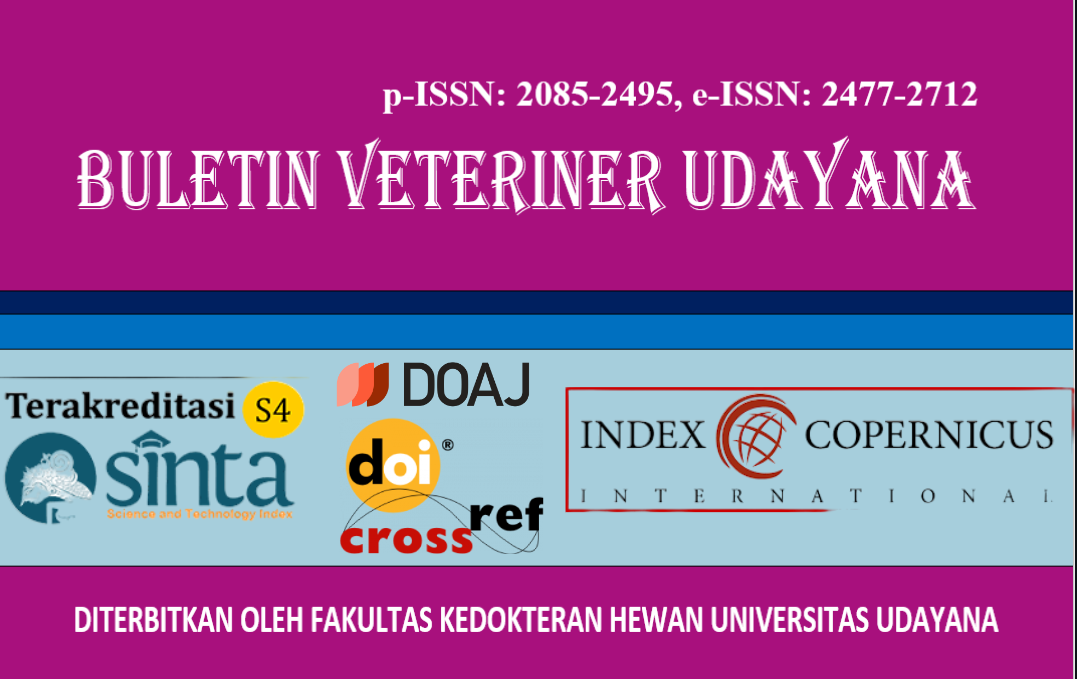COINFECTION OF SEVERE TRICHURIOSIS AND COCCIDIOSIS IN A DUROC WEANER PIG
DOI:
https://doi.org/10.24843/bulvet.2024.v16.i06.p10Keywords:
Bangli, coccidia oocyst, E. coli, swineAbstract
The presence of gastrointestinal parasites can inhibit the growth of weaning-phase pigs. In addition, gastrointestinal parasites can make pigs more susceptible to other pathogens and even cause death. This case report discusses the co-infection of severe trichuriosis and coccidiosis with secondary Escherichia coli infection in a Duroc weaner pig. Data were collected through anamnesis, epidemiological studies, clinical signs, anatomical pathology and histopathological examinations, and bacteriology and parasitology laboratory examinations. The case animal is a male Duroc pig, 2.5 months old, originating from Sulahan village, Susut sub-district, Bangli regency, Bali. The clinical signs observed were diarrhea with dark feces and decreased appetite. On anatomical pathology examination, 2329 adult Trichuris suis worms were found in the cecum and colon. Changes in the organs included wounds and hemorrhage in the cecum and colon, hemorrhage in the stomach and small intestine, and a singular white spot found on the uneven-colored liver. Histopathological examination showed enteritis hemorrhagis et necroticans, colitis necroticans verminosa, gastritis necroticans, and hepatitis necroticans. Bacteriological examination identified Escherichia coli in the intestine and liver specimens. Qualitative examination of feces revealed T. suis eggs and Eimeria spp. oocysts. According to McMaster's calculations, there were 36,200 eggs per gram (EPG) of T. suis and 15,800 oocysts per gram (OPG) of Eimeria spp. Based on all data, along with the results of laboratory examinations, it can be concluded that the pig was infected with severe trichuriosis and coccidiosis with secondary Escherichia coli infection. Pigs that are still alive and are confirmed to be infected with trichuriosis and coccidiosis should be treated.




